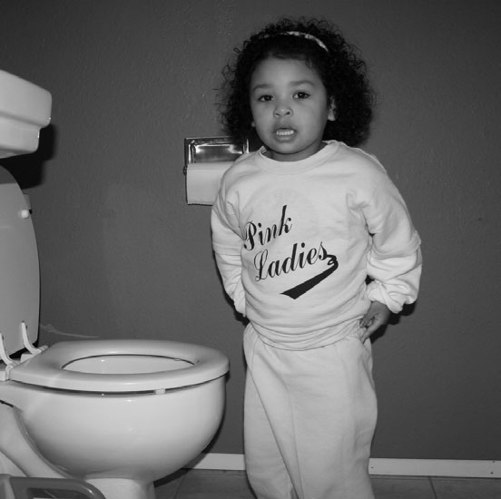The No-cry Potty Training Solution (9 page)
Read The No-cry Potty Training Solution Online
Authors: Elizabeth Pantley


60
The No-Cry Potty Training Solution
Kailee, three and a half years old
but most children make this change easily once they are toilet trained.
Tips for Toilet Training
Once you’ve decided on how you’ll approach potty training with your child and gathered all your supplies, it’s almost time to actively begin the process. Following are a few things to consider as you move forward.





It’s Potty Time! Setting Up
61
Mother-Speak
“It is really convenient to carry the potty from room to room. If I bring the potty to Thomas, it’s usually to the place both boys are playing, so I don’t have to worry about the baby running off unsupervised or becoming distracting to Thomas. Having the potty in the kitchen is especially convenient if Damon is in the high chair and Thomas needs to do a wee.”
—Suzanne, mother of two-year-old Thomas
and eleven-month-old Damon
Remember the Magic Two!
The teacher’s positive attitude and kind patience will set the pace for the toilet training journey. Take a deep breath, relax, and enjoy the experience with your little one.
Take It Slowly
The Murphy’s rule of potty training seems to be “The more you rush, the longer it will take.” Even if a day care or other deadline looms, don’t rush the process with too much intensity and pressure. Being more relaxed will help your child learn more easily and will make this less stressful for you, too.
If you feel peaceful about the process, it’s likely your child will as well. Ironically, the less you push, the more quickly the results will occur.





62
The No-Cry Potty Training Solution
Grandfather-Speak
“All I hear around the house is talk about the potty training. I think everyone should relax. A year from now they won’t even remember all the fuss and hullabaloo.”
—Joseph, father of six and grandfather of four, including thirty-two-month-old Jesse
Dress for Success
It’s challenging enough for a toddler to make it to the toilet in time without adding the complication of snaps, zippers, and buttons. Many a trainee has made it to the bathroom only to have an accident standing in front of the toilet, attempting to undress. For the next few months and probably even longer, your child should, whenever possible, avoid wearing pants with buttons, snaps, belts, or zippers and shirts that hang lower than the waist. Make sure that your child can remove her clothing easily and quickly. In the case of dresses, make sure they are short enough to be moved entirely out of the way.
The best clothing for a new potty trainee is a T-shirt and shorts or pants with an elastic waistband. Make sure these are somewhat loose fitting so that your child can easily get them up and down.
At the beginning of training, you may want to have your child actually remove his pants and underwear when he uses the potty, because there are a lot of new things to think about and having a wad of pants around his ankles can be distracting and partially lowered pants
It’s Potty Time! Setting Up
63
can become splattered. If you do have him remove his pants, feel free to help him take his clothes off and put them back on, even if he can do it himself. Having to dress and undress ten times a day can get old fast for an active toddler and may lead to disinterest in using the potty at all. Don’t worry, though—he’ll master this part of the process in no time.
